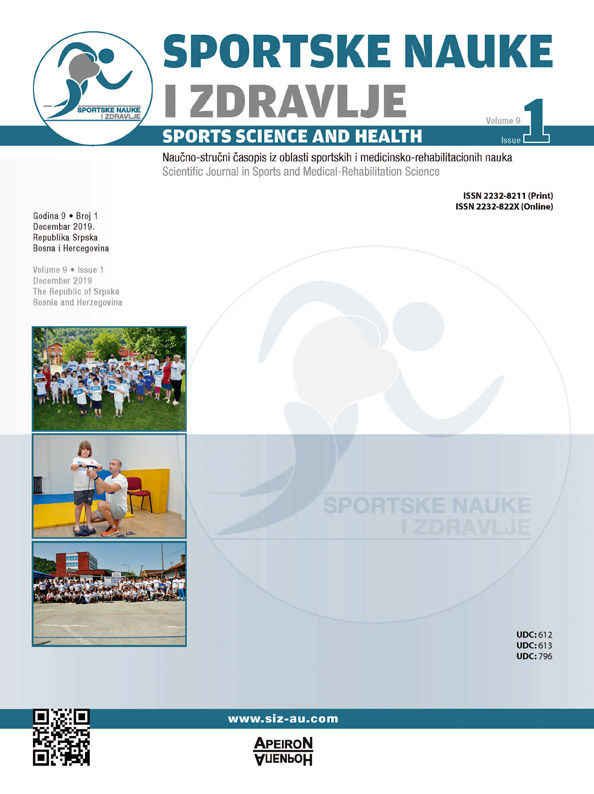Differences in Ventilation Abilities in Boys and Girls Aged 10 - 15 / Razlike u ventilacijskim sposobnostima dječaka i djevojčica u uzrasnom periodu od 10 - 15 godine
DOI:
https://doi.org/10.7251/SSH1901014CAbstract
The aim of the study was to determine the differences in ventilation parameters between boys and girls in the 10-15 year age group (aged 10-15). The study was conducted on a sample of N = 1857 subjects divided into 2 subunits taken from the boys (n = 968) and girls (n = 889) from the area of the City of Mostar. The sample variables consisted of 3 variables for the assessment of anthropometric measures, 24 variables were used for the evaluation of the ventilation parameters using Spirovit SP1 of the company Schiller AG. Results processing was performed in SPSS 21.0. To determine quantitative differences between groups, a canonical discriminatory analysis was applied. A discriminatory analysis found that there are statistically significant quantitative differences between groups of boys and girls on a global level. One function is isolated which explains 100% of the total variance and has a statistically significant high value (Can.Corr.=.948). The value of Wilk’s lambda is low (.101) indicating high discrimination between groups. In quantitative terms, at the multivariate level, the greatest discrimination between groups in an isolated function is the variables of the Tiffen index (FEV1/FVCPRED), FEF50PRED, FEF75PRED and the percentage of the Tiffene index for respondents (FEV1/FVC%). This is also supported by the value of the centroid position in an isolated discriminatory function, where we can see the great distance between the centroid that is represented by groups of boys and girls in the space.Downloads
Published
2019-07-12
Issue
Section
Чланци
